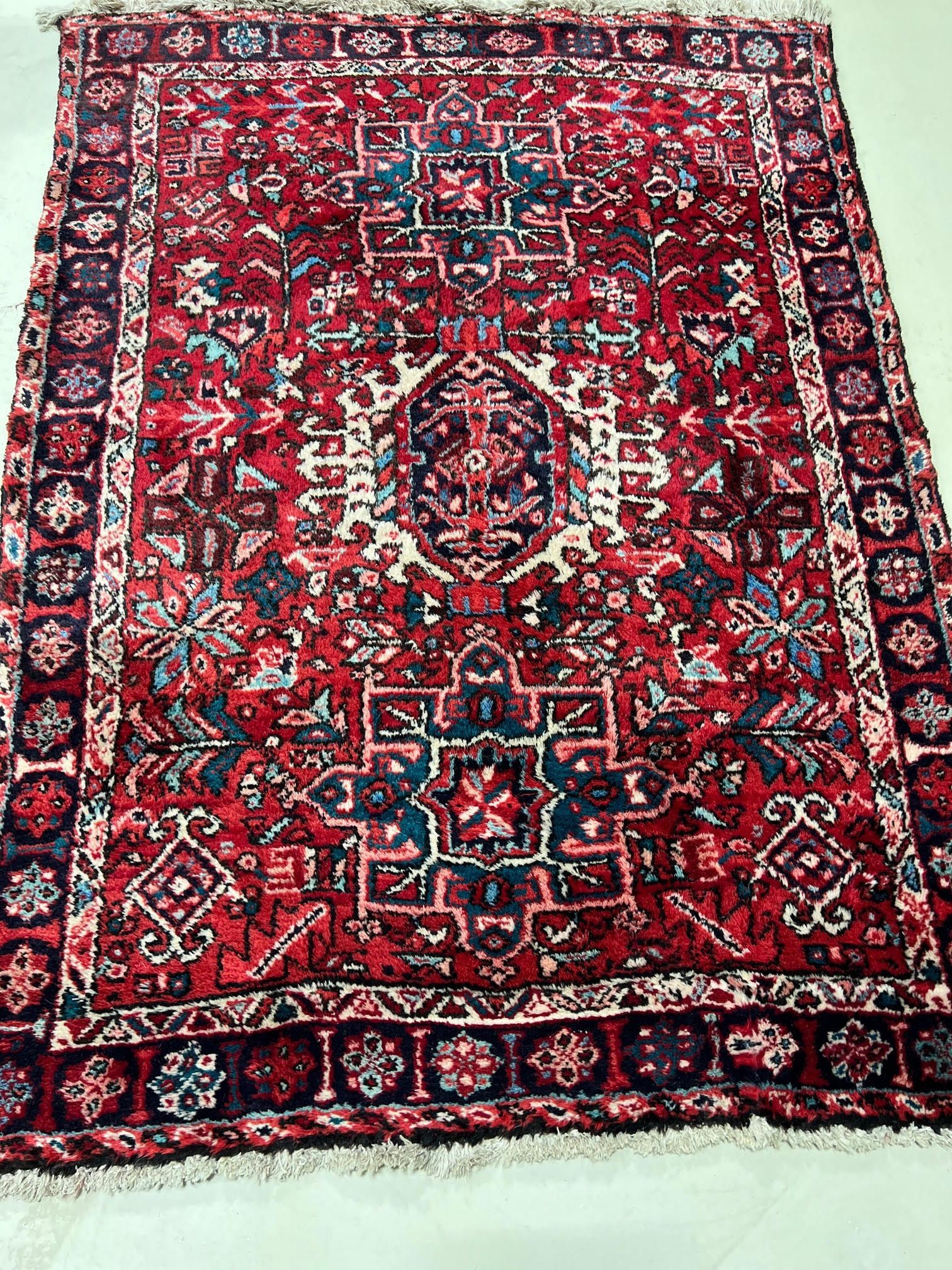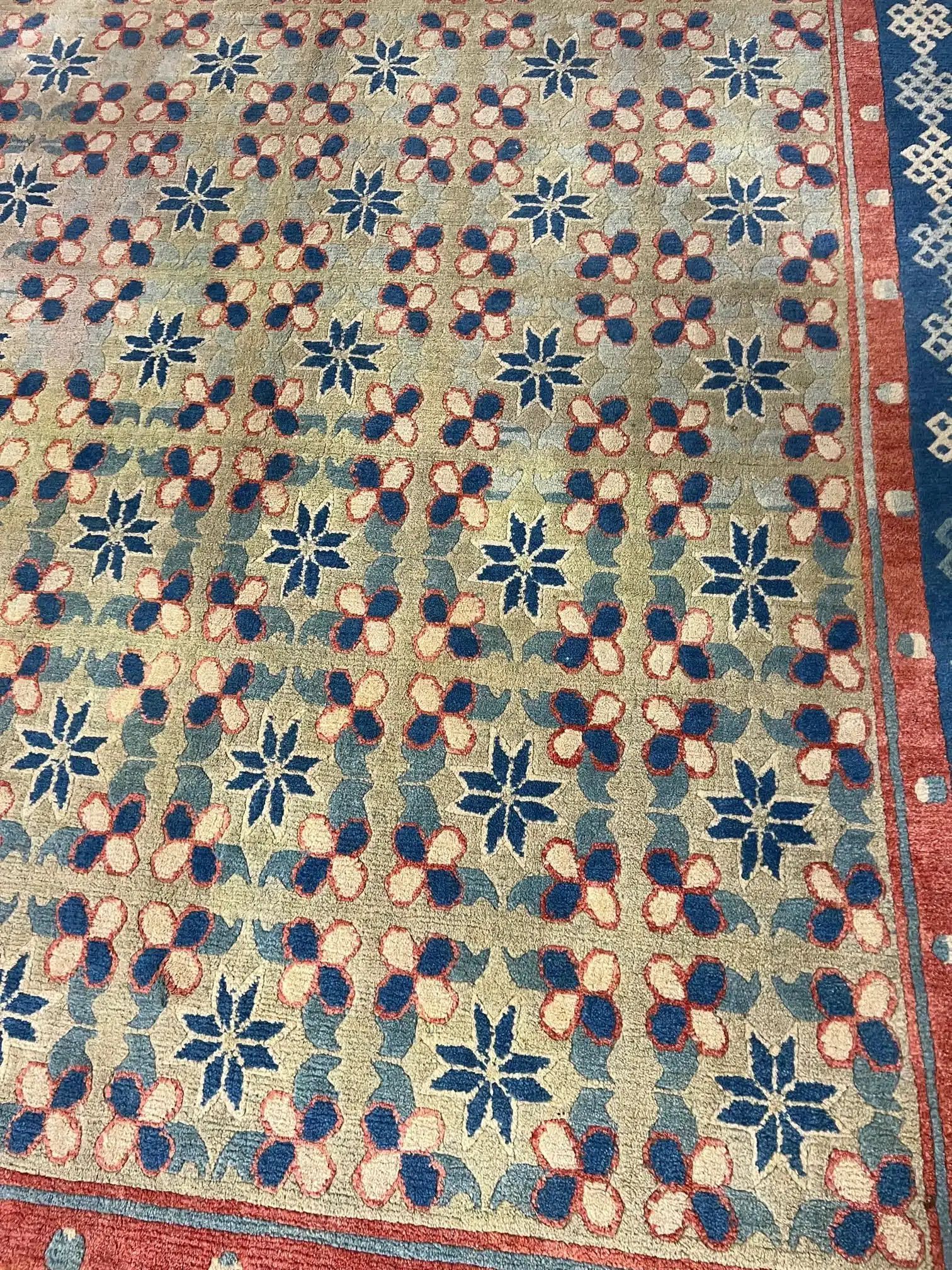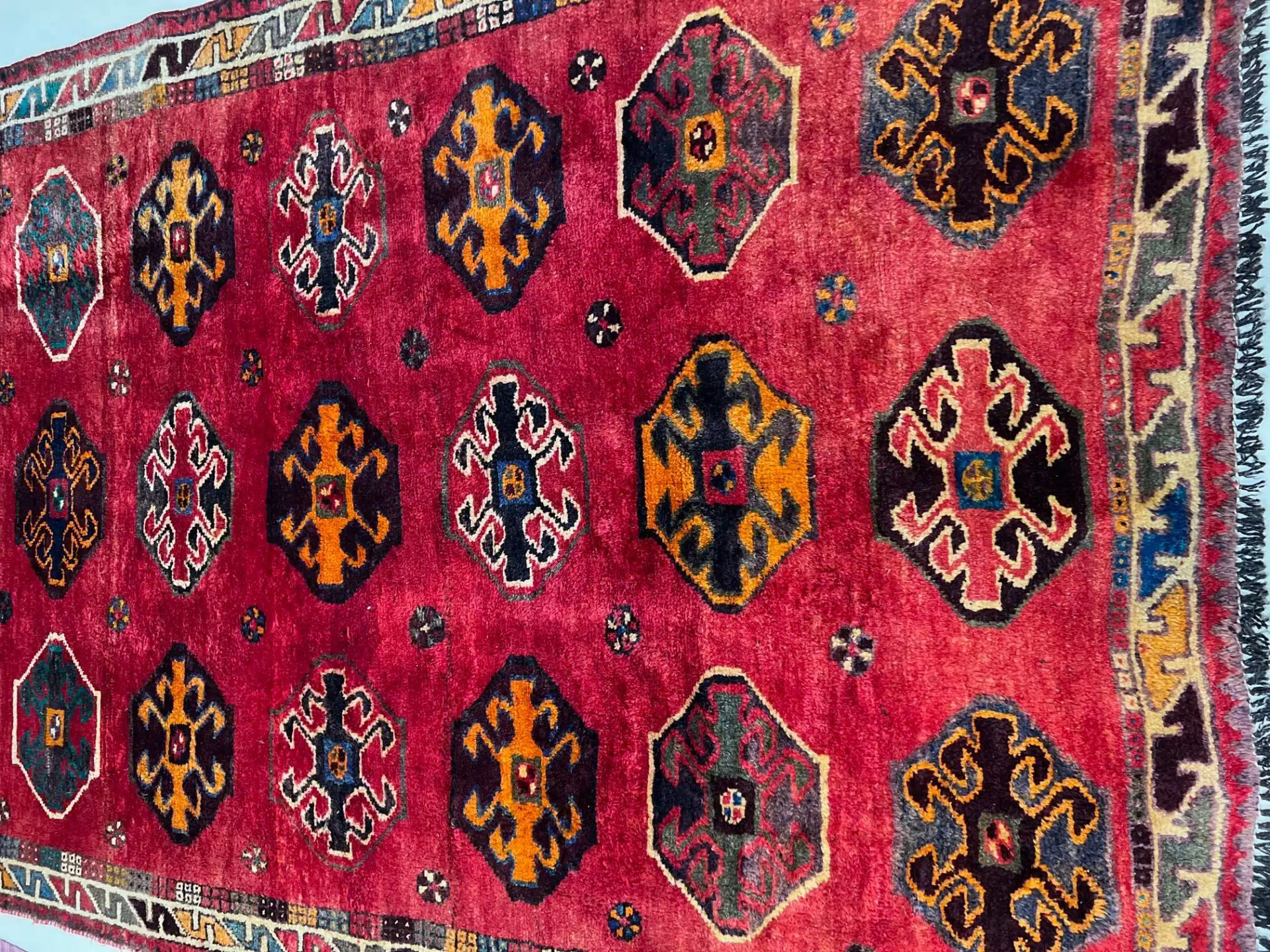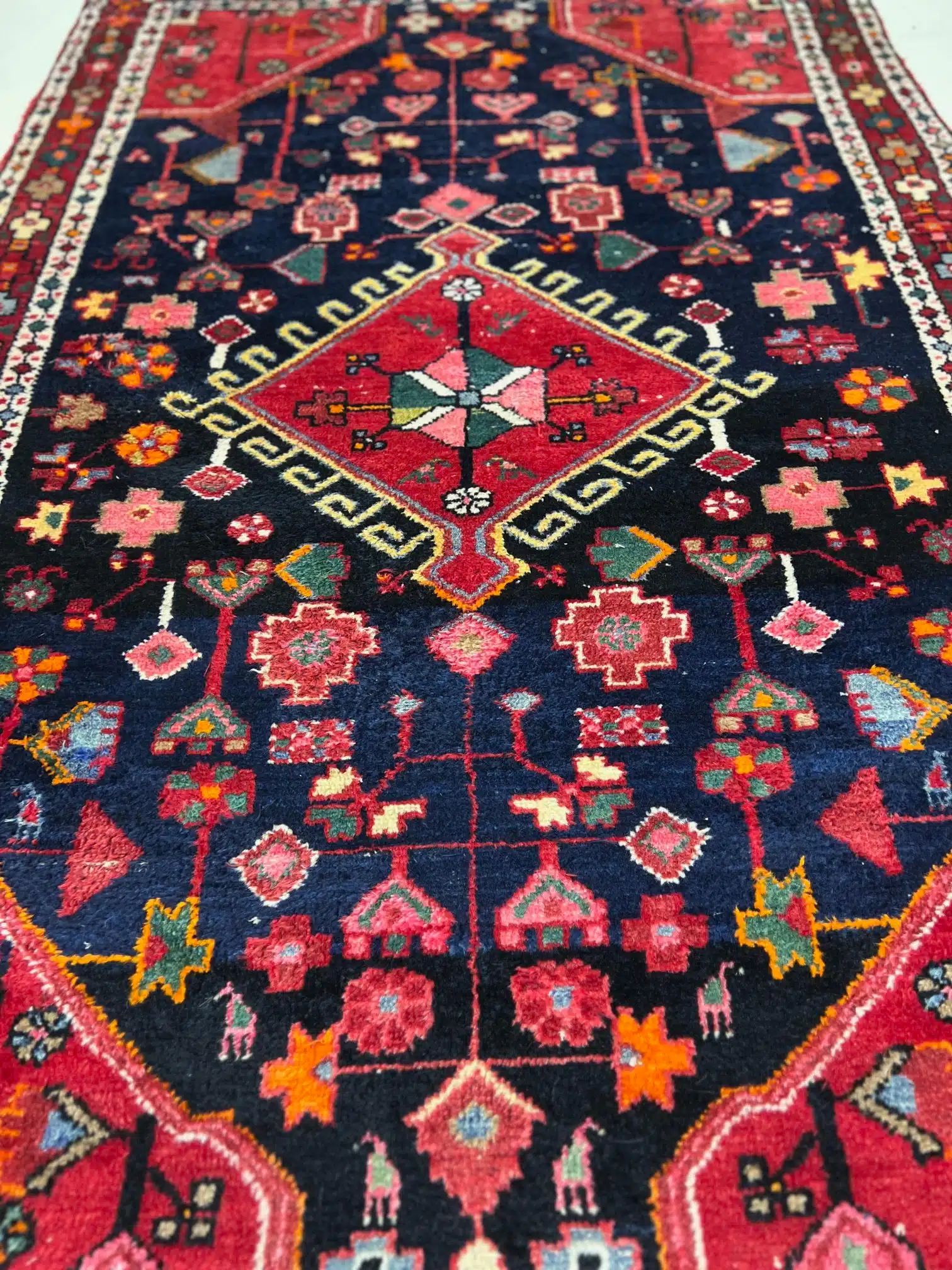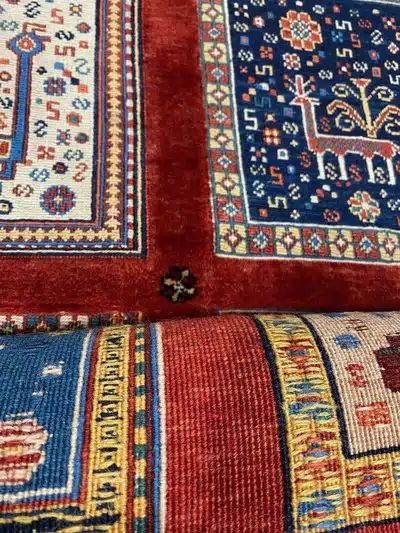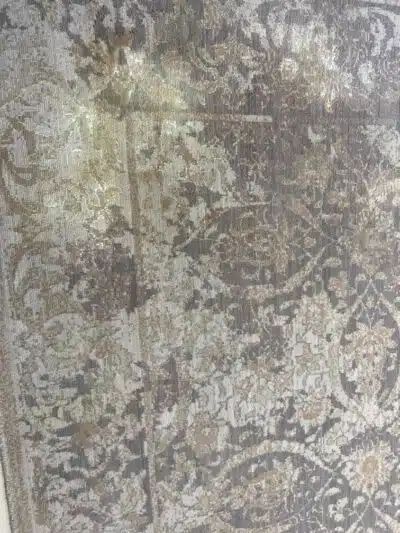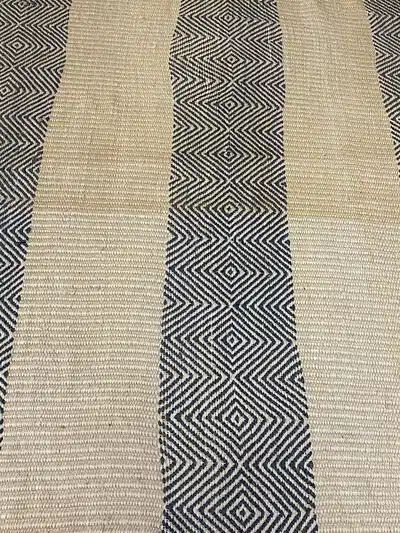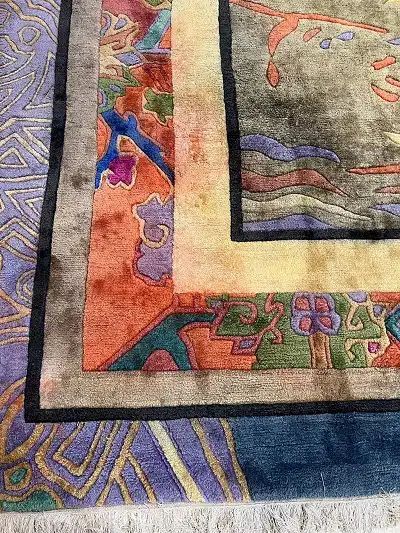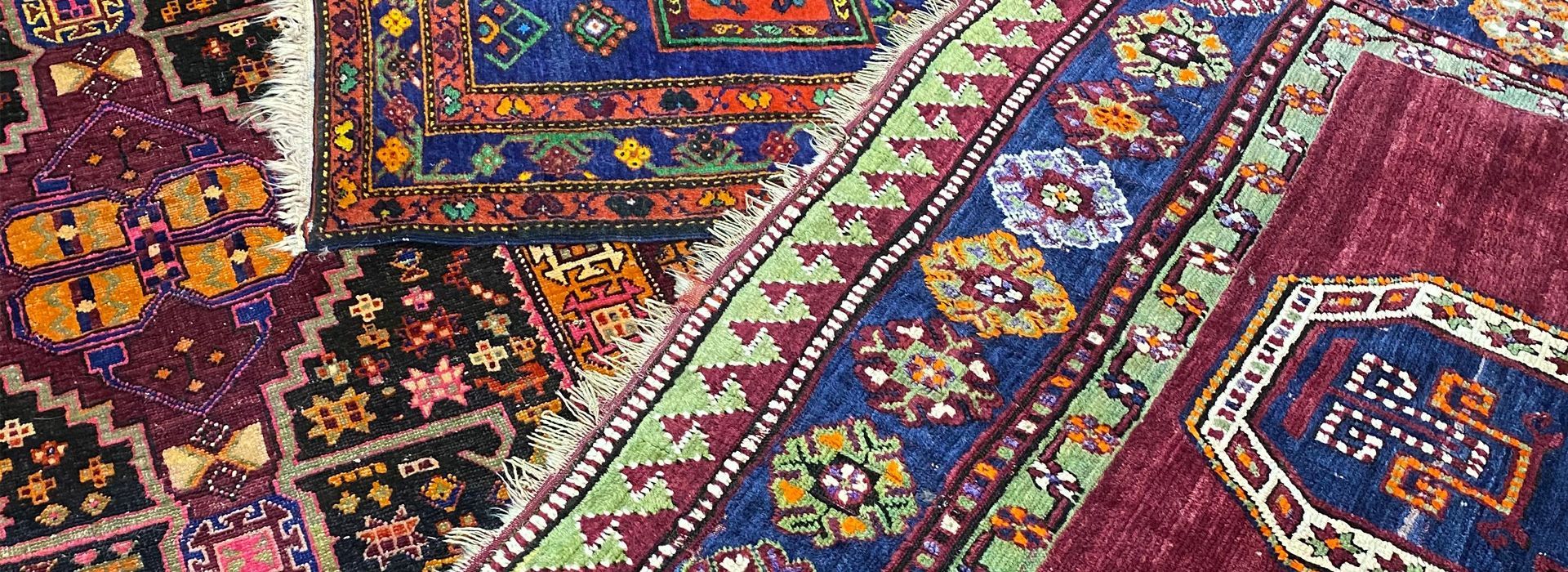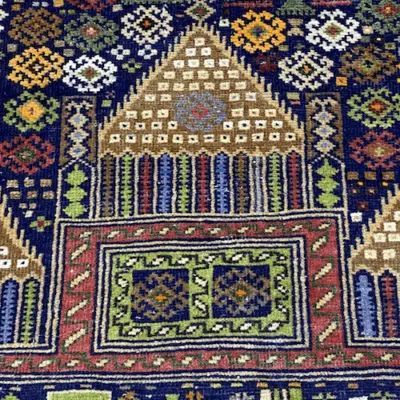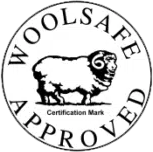Understanding White Knots
What’s With The White Knots in My Rug?
Many rug owners and quite a few cleaners are unaware that many rugs marked 100% wool on the label actually have quite a bit of cotton in them. While the face yarns are 100% wool, the foundation of the rug is usually made of cotton. Weavers don’t have an endless spool of cotton yarn to use, so as the rug is being woven, when the weavers come to the end of a strand of cotton, they simply tie a new one on and keep weaving. If a yarn happens to break during the weaving process, the tow ends are tied together, and the weaving continues. These knots, called foundation fiber knots, or white knots for short, are found in every hand-woven rug. These knots are not damaged, they are a normal part of the weaving process. They are usually white but will be the same color as the foundation of the rug, whatever that is. There may be a few of them or many of them, but they are always there and many times they can be seen on the rug.
There are four ways to deal with white knots.
- Accept them as a natural part of the rug
- Hide them by pushing them to the back
- Clip the ends so they are shorter than the pile
- Hide them with dye or ink (not a permanent fix)
There are two ways that white knots can become more visible.
- Age
- Really good washing
With age, the wool pile will begin to wear from foot traffic and the white knots that used to be shorter than the wool pile can now be seen. Many rugs are sheared with a very low nap. This is common today, and this can make the white knots more visible even in a relatively new rug. Dirt causes the cotton to become dull and less noticeable. Washing cleans the cotton and washes away any ink that may have been applied to reduce the appearance of white knots. This may cause a newly clean rug to seem to have more white knots than it did when it was brought to the cleaning facility.
The post Understanding White Knots appeared first on The Austin Rug Cleaner.
